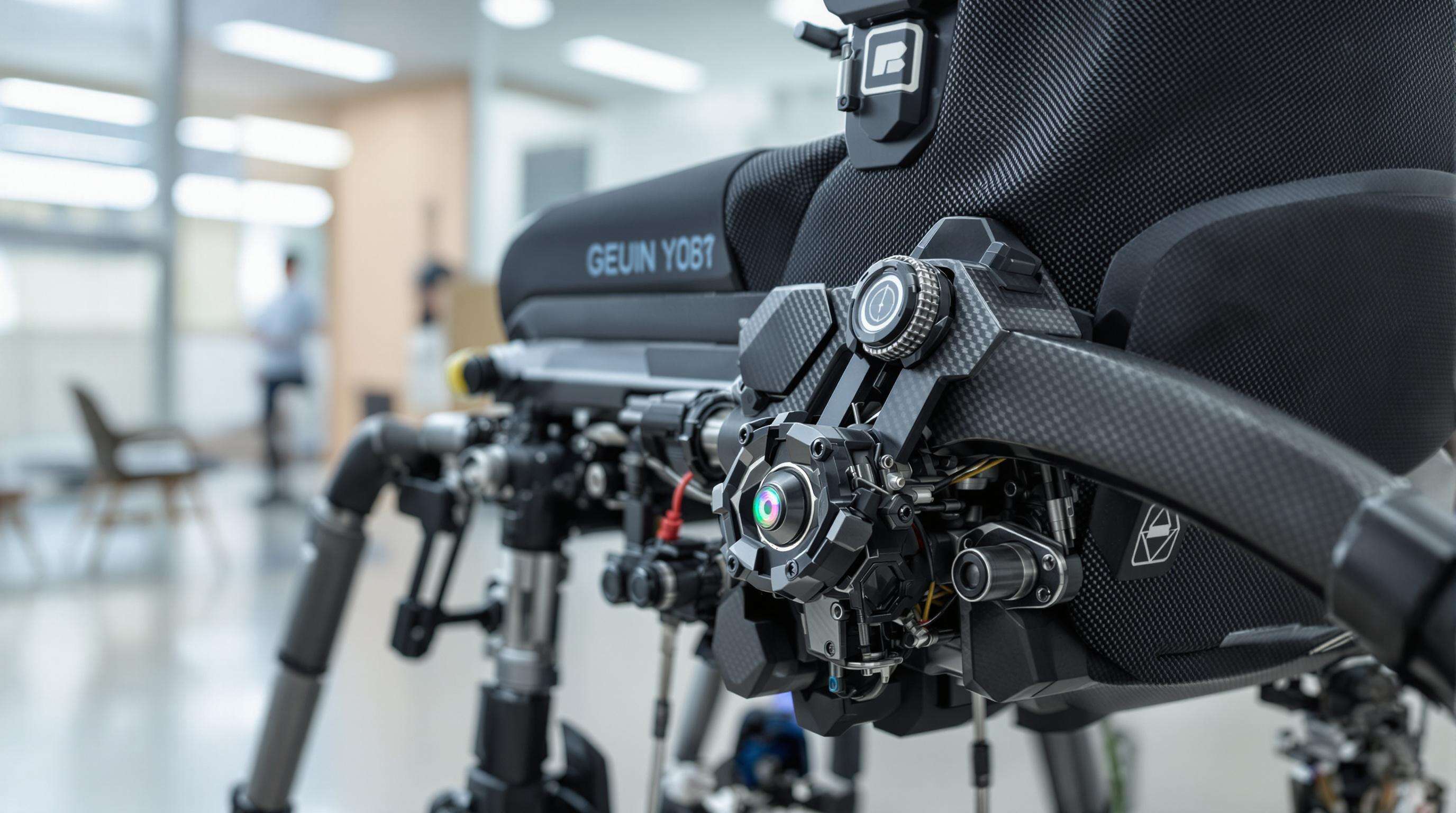Carbon fiber wheelchairs are becoming more common around the world, with about 15% more people adopting them each year. This trend comes from better materials being developed and changes in population demographics. Most of the demand right now comes from developed countries like the United States and Germany, which together make up roughly two thirds of the market according to Ponemon's 2025 report. Meanwhile places like India and Brazil are catching up fast, showing around 22% growth annually as their healthcare systems continue to expand and improve.
North America and Europe lead with $2.3 billion in combined 2023 sales, but the Asia-Pacific region is projected to triple its market share by 2028. This growth aligns with WHO data showing that 82 countries now classify mobility aids as essential medical devices, enabling broader insurance coverage and improving patient access.
By 2030, 1 in 6 people globally will be over 65 (WHO), directly increasing demand for mobility solutions. Clinical trials from Johns Hopkins show that patients with multiple sclerosis and arthritis exhibit 38% higher therapy adherence when using lightweight wheelchairs, underscoring the health benefits of advanced mobility devices.
The shift toward home-based care has increased wheelchair prescriptions by 29% since 2020. Carbon fiber models are especially favored for their 19–27 lb weight range, which supports independent transfers and reduces reliance on caregivers—critical for aging populations managing daily mobility.
| Region | Growth Rate (2023) | Key Adoption Factor |
|---|---|---|
| North America | 8.7% | Medicare Part B reimbursement |
| Asia-Pacific | 14.2% | Hospital-pharma joint ventures |
Japan's "Silver Care" initiative and India's PMJAY health insurance scheme exemplify policy-driven market acceleration, collectively covering 8 million new users since 2022.

Carbon fiber wheelchairs weigh 18–22 lbs (8–10 kg), achieving a 40% reduction compared to steel or aluminum models. This strength-to-weight ratio improves portability and storage while maintaining durability—essential for daily use. Lighter frames also reduce caregiver strain during transfers and enhance vehicle loading efficiency in home healthcare settings.
A 2023 ergonomics study found that carbon fiber frames reduce shoulder joint stress by 28% during propulsion. Lower inertia enables quicker stops and starts, enhancing safety in confined spaces. Rehabilitation center surveys report 31% less user fatigue during extended use, contributing to greater adherence to mobility routines.
| Material | Avg. Weight (lbs) | Corrosion Resistance | Lifetime Maintenance Costs |
|---|---|---|---|
| Carbon Fiber | 18-22 | High | $1,200 |
| Aluminum | 25-30 | Moderate | $1,800 |
| Steel | 35-40 | Low | $2,500 |
While steel frames have lower initial costs, carbon fiber's durability and minimal maintenance result in 63% lower lifetime expenses. Its vibration-damping properties further improve comfort on uneven surfaces, making it ideal for active users.

Today's carbon fiber wheelchairs come equipped with IoT sensors and Bluetooth controls that let users track how they're being used and monitor physical stress in real time. A recent study from the Journal of Rehabilitation Engineering found that these smart features cut down on repetitive strain injuries by around 15-20% when they send warnings about poor posture. The material itself has another advantage too. Since carbon fiber doesn't conduct electricity, it won't interfere with medical devices or smartphone apps that track health metrics. This makes it possible to pair wheelchairs with adaptive seating solutions something that just isn't feasible with old fashioned aluminum frames which tend to cause all sorts of signal problems.
The flexibility of carbon fiber lets designers create parts that snap together and rearrange themselves in just over five minutes flat. Users get seat widths that change by half inch steps across twelve different positions, plus backrest angles that shift fifteen degrees either way something no stiff steel frame could ever manage. Top tier versions actually give customers around forty percent more ways to customize their setup compared to what aluminum frames typically offer. And despite all these adjustments, these chairs still hold up under serious weight tests, passing the ASTM F2641-22 requirements for supporting weights as high as three hundred pounds without breaking a sweat.
Carbon fiber wheelchairs definitely cost more upfront compared to aluminum ones, usually around 60 to 80 percent extra. But what people often overlook is how much longer they last. These advanced models typically stick around for about ten years, which is actually double the lifespan of regular wheelchairs. Manufacturers are working on ways to bring down prices too. New automated methods combined with recycled materials should cut production costs somewhere between 25 and 30 percent by the end of this decade according to industry forecasts. Active individuals who spend lots of time using their wheels will find these chairs worth every penny. The reduced fatigue factor alone saves roughly $3,200 over time when factoring in replacement costs. That makes carbon fiber increasingly popular not just among athletes but also in rehab centers where durability matters most.
Carbon fiber electric wheelchairs accelerate about 32 percent quicker and turn roughly 19 percent tighter than their aluminum counterparts according to tests done last year in biomechanics labs. What makes carbon fiber so good? Well, it's basically super strong yet light weight, which means these chairs can handle over 300 pounds without breaking down but still respond quickly when motors need to adjust. Looking ahead, experts think the market for high tech mobility solutions will grow at around 10.6% each year until 2033, and much of that growth comes from people switching to carbon fiber frames because they just work better in real world situations.
Cutting down on weight by 40% compared to steel means electric wheelchairs can last around 27% longer on a single charge, which matters a lot for people who need mobility throughout their entire day, sometimes eight hours or more. The lighter design also helps save about 15% in power consumption when going uphill, making it easier to get around those tricky hills found in many city areas. When paired with new solid state batteries, these carbon fiber wheelchair frames are now hitting distances of approximately 18 miles before needing another recharge, as shown in recent tech updates from the mobility sector in 2024.
The integration of artificial intelligence and carbon fiber is transforming wheelchair functionality:
| Feature | Carbon Fiber Advantage | User Impact |
|---|---|---|
| Predictive AI | Vibration-dampening frame enables | Reduces corrective maneuvers by 42% |
| Obstacle Avoidance | High torsional stiffness improves | Enhances safety on uneven terrain |
| Voice Control | Lightweight design permits | Allows seamless integration of |
| Integration | additional sensor arrays | assistive technologies |
This synergy reduces user fatigue by 38% and increases daily travel range by 2.1 miles, according to 2025 clinical mobility trials.
Carbon fiber wheelchair markets around the world seem set to expand quite a bit over the next decade or so, maybe somewhere around 8.9 percent year after year until 2032 according to SNS Insider from last year. A lot of companies making these chairs have started setting up shop closer to where people actually need them, especially across parts of Asia and Latin America. This has helped cut down on how long it takes to get products out the door by roughly thirty to forty percent. At the same time, those who supply the materials needed for manufacturing are working hard to develop better resins as demand keeps climbing steadily upward.
New factories in Vietnam and Mexico use automated layup processes to produce carbon fiber frames, cutting production costs by 18%. This geographic diversification reduces dependency on single-source suppliers and mitigates supply chain risks highlighted during the COVID-19 pandemic, when 78% of medical device manufacturers faced disruptions.
Under the EU's Medical Device Regulation from 2022, advanced wheelchairs now fall under Class IIb classification, which actually cuts down on the time it takes for approvals by about half a year. Things are looking different across the pond too. The US Medicare system made changes in 2023 that now cover carbon fiber wheelchair models when there's proof they can last over five years. And interestingly enough, around two thirds of healthcare providers have reported seeing more people going for these upgraded options since this new policy came into effect.
A 2023 WHO partnership with 14 NGOs distributed 500,000 refurbished carbon fiber wheelchairs across Sub-Saharan Africa, yielding a 200% return on healthcare productivity gains. By adopting modular designs for local assembly, manufacturers are reducing retail prices by 20% through decentralized production, expanding access in underserved regions.
Carbon fiber wheelchairs typically weigh between 18-22 lbs, which is significantly lighter compared to steel or aluminum models. This contributes to ease of use and transport.
Carbon fiber wheelchairs significantly reduce strain on upper limbs due to their lighter weight and improved biomechanics, making them easier to maneuver and enhancing user comfort.
While carbon fiber wheelchairs are more expensive upfront, their durability and lower maintenance costs make them a cost-effective choice in the long term, especially for active users.
Carbon fiber wheelchairs often incorporate smart technology like IoT sensors, which help in reducing repetitive strain injuries and ensuring user safety in real-time.
The demand is primarily driven by aging populations, improvements in chronic disease management, increased adoption of home healthcare, and innovations in wheelchair technology.
 Hot News
Hot News2025-05-15
2025-05-15
2025-05-15
2025-05-15
 ONLINE
ONLINE ONLINE
ONLINE
Copyright © 2025Ningbo Ks Medical Tech Co., Ltd. all rights reserved - Privacy policy